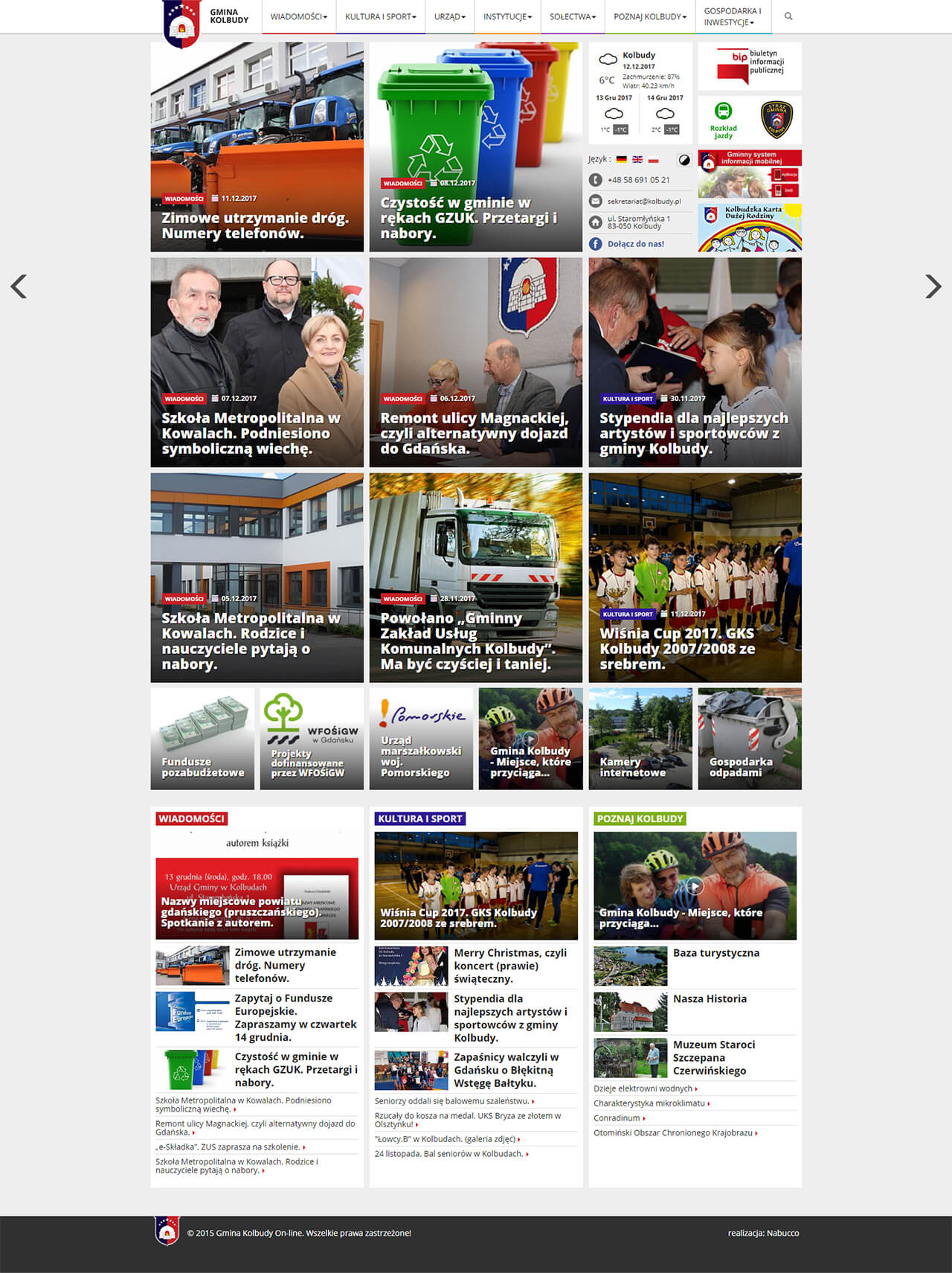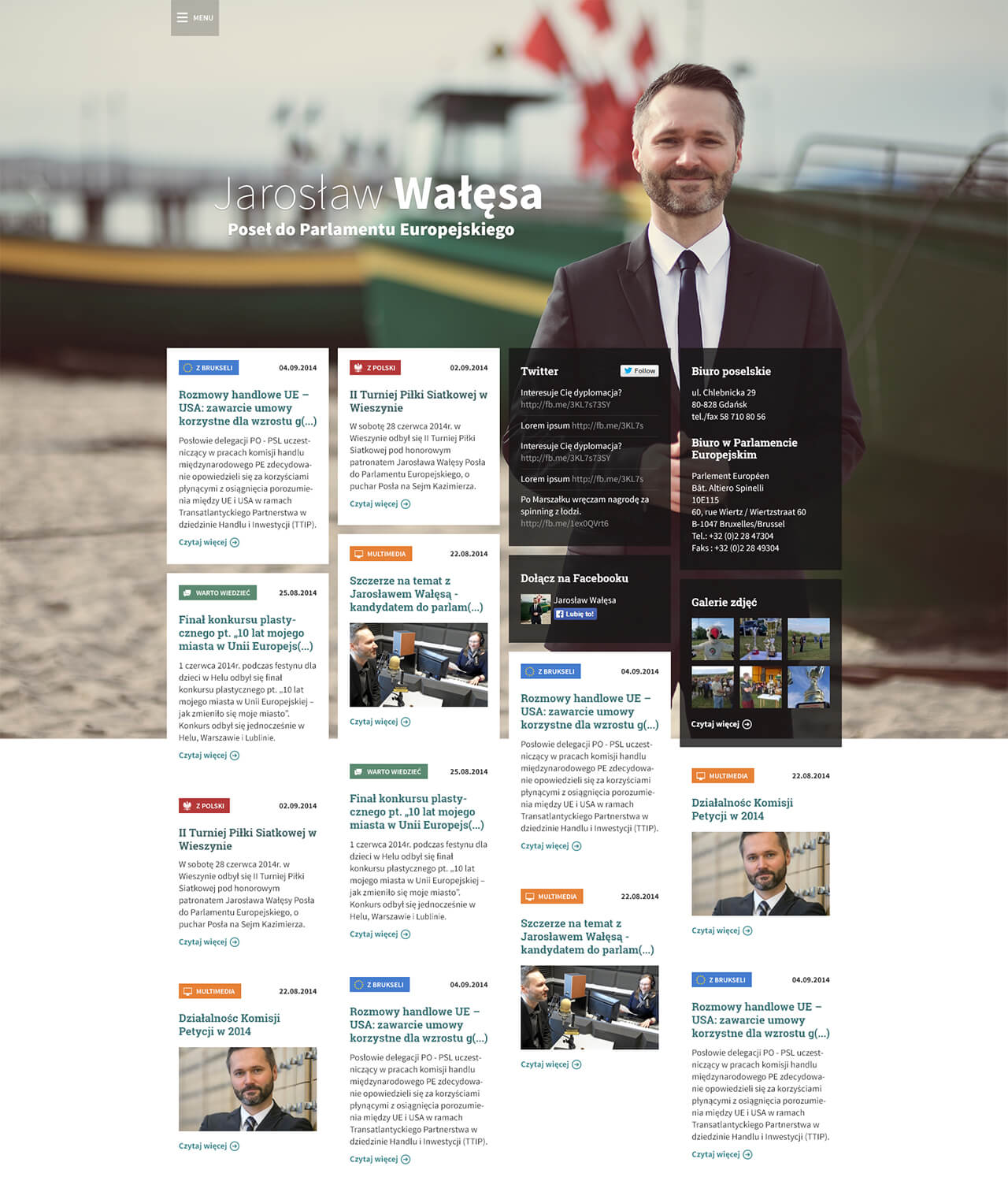
WebCMC, managing communications with the client
WebCMC
To tell you the truth, we can divide websites (not taking technical aspects into consideration) into two groups according to their functions:
- Websites which are developed once and for all. Nothing happens with these sites apart from formulaic news published by the client once a month or even less often (the impact of such a strategy on website positioning is a different subject entirely).
- Websites where the creation of a new page is just the beginning, because its importance lies elsewhere. Its success depends on the quality, regularity and looks of the published information.
We've experienced the clash between those two types at the beginning of our adventure. In 2010 we started working with the city of Kościerzyna on a new city webpage. City webpages in 2010 did not differ very much from how sites were developed nearly a decade earlier: zero attention to nice graphics, three columns: a menu in the first one, news presentation in the second and a plethora of blinking banners of different sizes moving from right to left in the third column.
Creating a new webpage was relatively simple. Our idea for the main news to take up ¾ of the screen, however, was pretty revolutionary.
The problems started when some of the stipulations of our agreement kicked in – we signed up for yearly site maintenance with updates to all contents.
The first issue was a lack of large, high quality photos of the city. Here the part of the agreement which we treated as a responsibility worked to our favour – once a month we organised a photo shoot in the location and time designated by the client. After a couple of months we had all of Kościerzyna photographed and a huge database of images ready to be used on the page.
The second problem pertained to responsibility... A standard discussion looked like this:
- "Why didn’t Nabucco publish the information yesterday?"
- "Because NO ONE sent anything yesterday!"
- "What do you mean?" "Let’s ask Mr X"
- "I did send it! But for some mysterious reason I haven’t got anything in the "sent mail" folder!" Mr X responds.
It was 2010 and using advanced systems which combined a CRM with bugtracking wasn’t that popular among smaller companies. Of course, there were CRMs and tracking systems, but trying to find a solution that merged those two issues yielded no results.
And then we found a truly diabolical solution...
Maybe we’ll write this system?
- 1.Forcing a client to use a system is pointless. Nobody wants to remember yet another password and log into yet another system to do something you can do with an e-mail or a phone call...
- 2.Requests cannot disappear. You have to be able to log in and check the date and time of the request for each registry during the discussion.
- 3.We have to be fast, quicker than our clients who could learn how to modify content on their own. This way we have to be less costly than the time the employee spends on updating.
We had the option to use financing from the Pomerania Development Agency. Let’s leave the topic of this winding and long process for another occasion :) Long story short: we prepared the application ourselves, placed 17th among 500 participants, and finished the project. And now we are one of few examples where an IT project backed by EU financing became profitable.
The system works in such a way that each client can report a problem, even if they don't know that they are not doing it. We gather and archive each e-mail, fax, phone call or message used for a request. Phone calls, of course after our clients give us consent, are recorded and attached to the thread as an mp3 file. There is always someone working on the other side of the system, who divides the threads to ensure that each request is handled in less than 30 minutes. The client receives time estimates, of course, if the request should take up more time.
Apart from the fact that this system works and our clients are happy, it has one additional benefit: NEVER, really NEVER were we called to the “principal's office” to get scolded by clients who use our webCMC. Nothing needs to be explained, because everything is there in writing.
PP.S. We didn’t have the chance to introduce this system in Kościerzyna, because before its completion there was an election held in the city and the new Mayor eliminated the whole old crew with one swift cut. The “www guys” were treated as “the media connected with the previous team” and cut out as with the rest of the gang. Even our webpage was put down and replaced with some tacky theme. It's 2017 now and you can see what the present (not ours!) webpage of the city of Kościerzyna looks like.
The system is implement in many other places, and with success. We manage large sites like:
- The Pomeranian Voivodeship Office
- The Kolbudy Commune page
- Jarosław Wałęsa, Member of the European Parliament page
- Gdańsk Development Agency
Politics have nothing to do with this. We’ve acquired each of these projects on the free market, taking part in tenders and requests for offers. We just provide quality and speed for an affordable price.
I can't show screenshots from the webCMC because of the sensitivity of the data. I am, however, willing to present the full capabilities of the system during a meeting.







